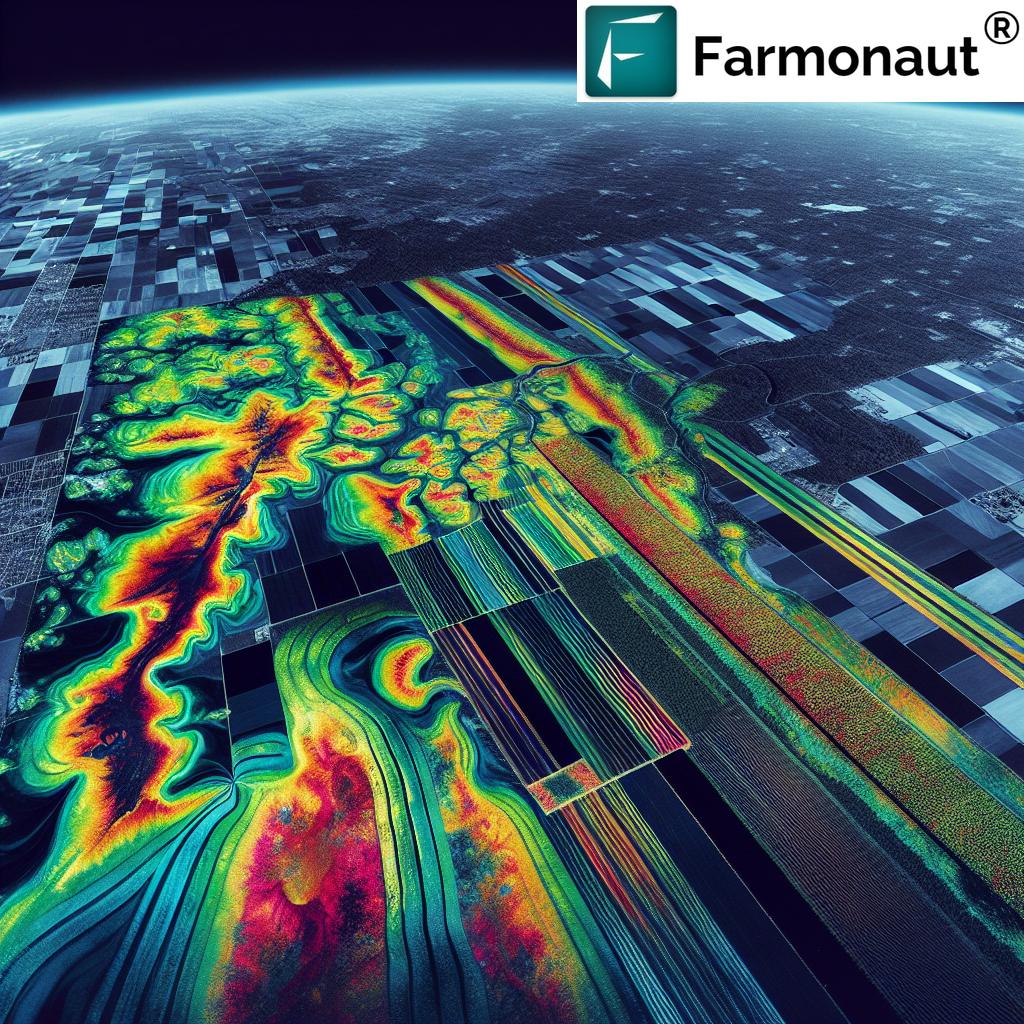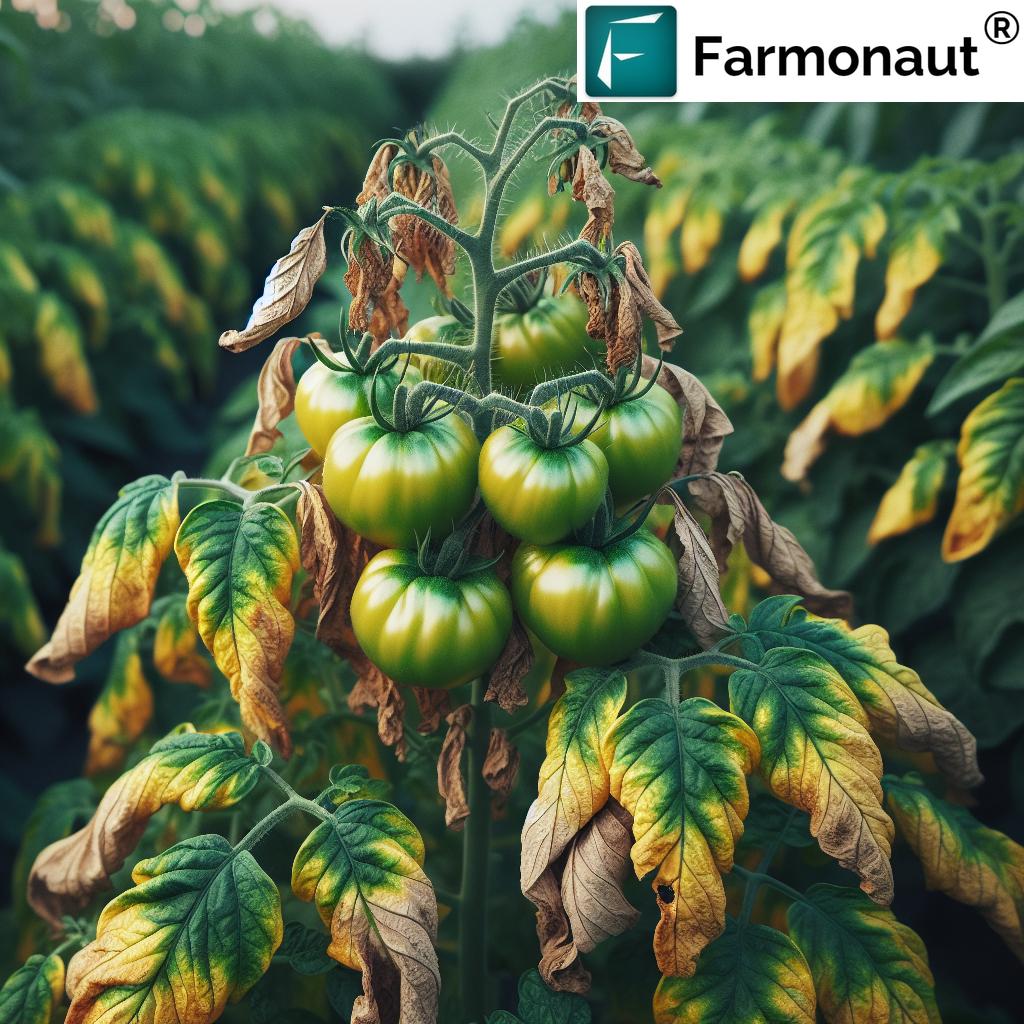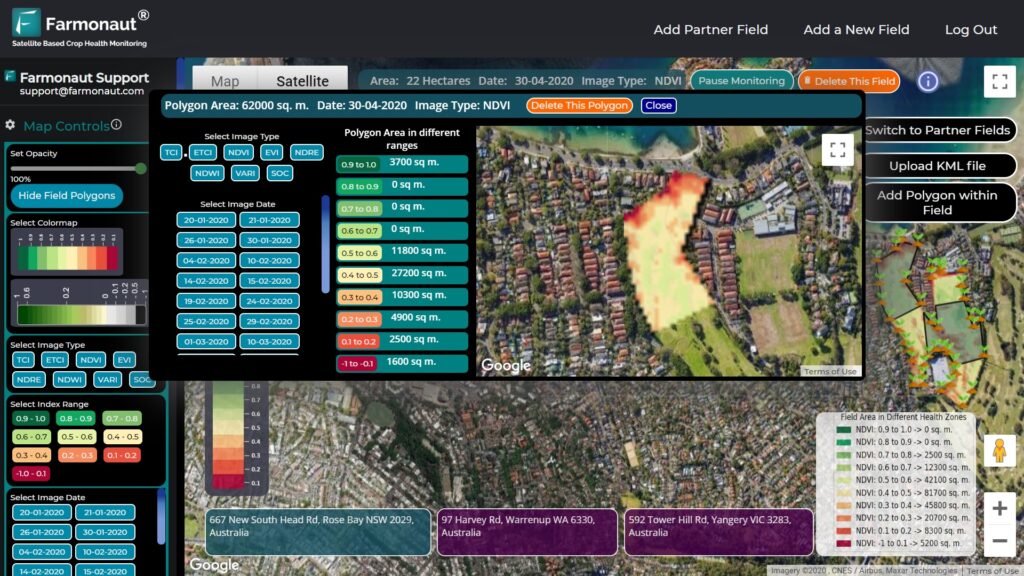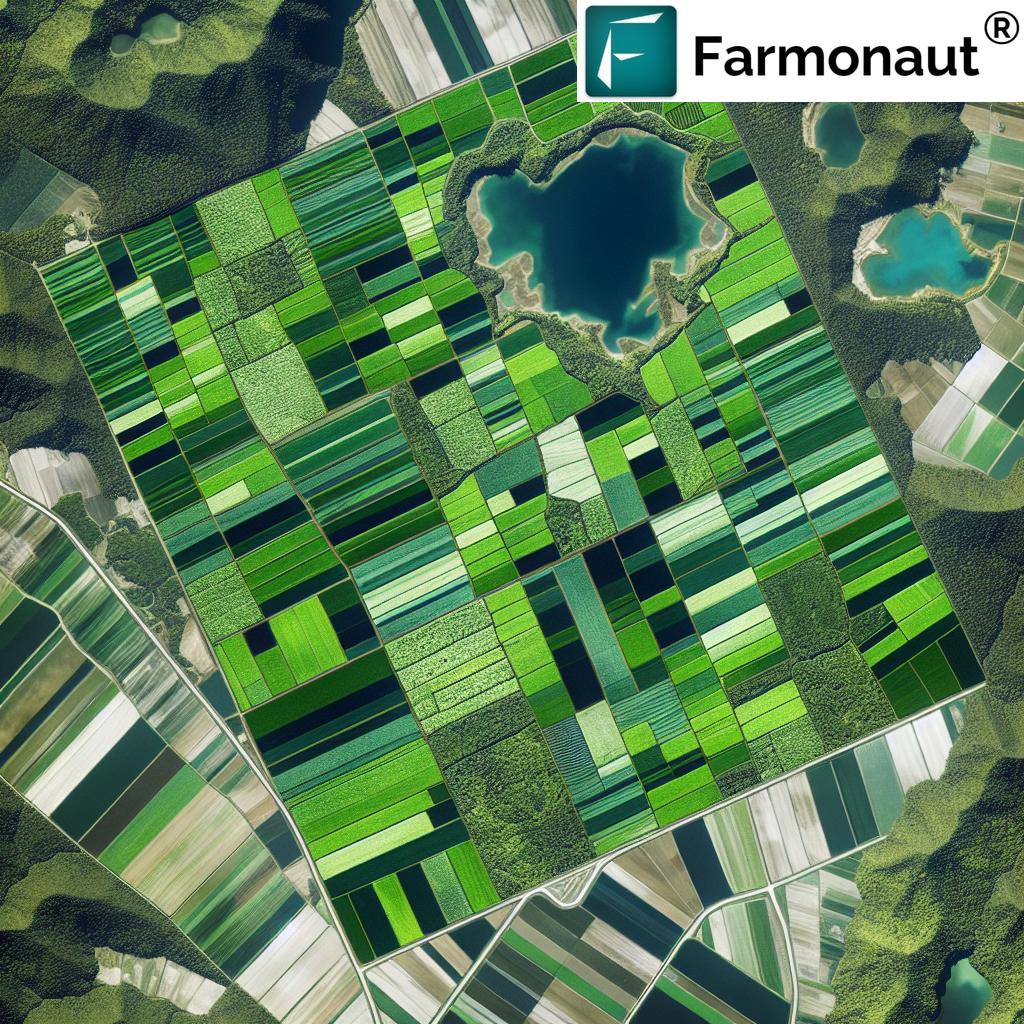Overcoming Challenges in Cotton Production: A Comprehensive Guide
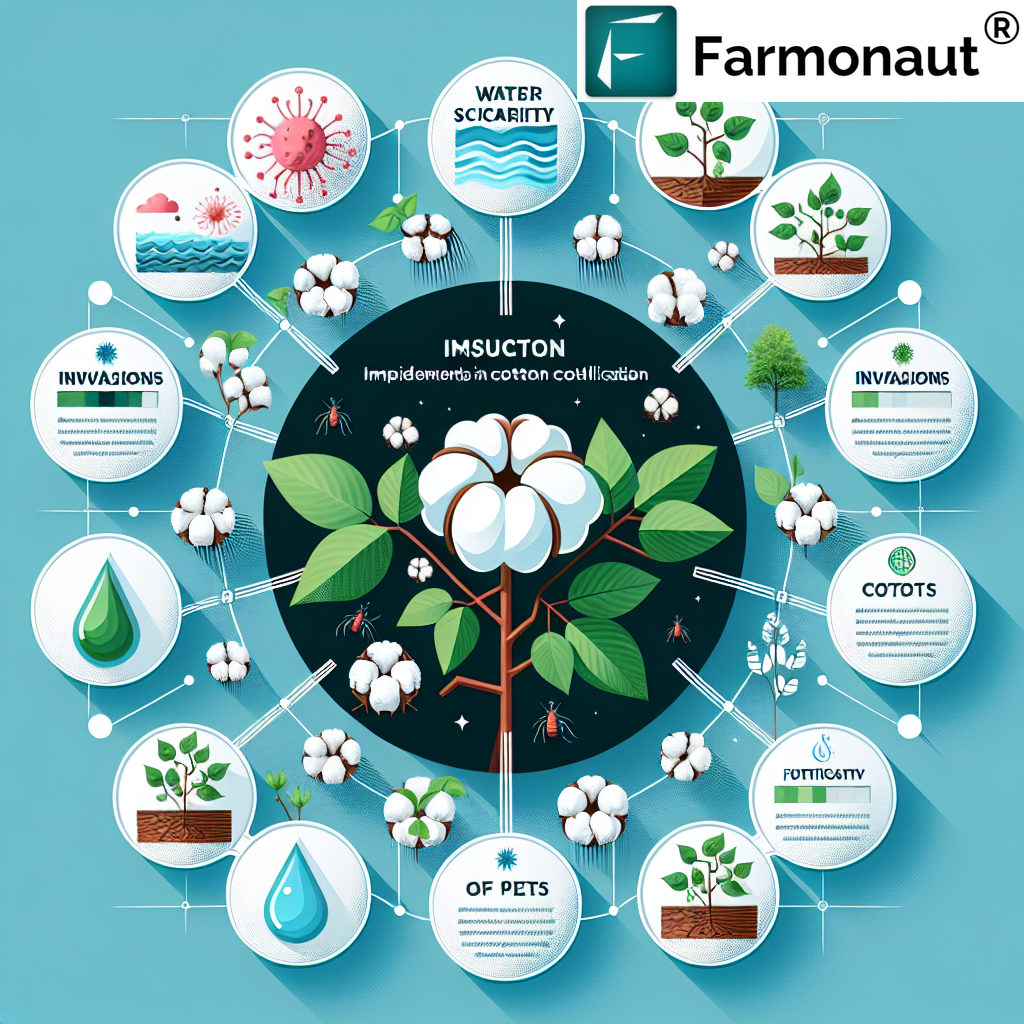
At Farmonaut, we understand the intricate challenges faced by cotton farmers worldwide. As pioneers in agricultural technology, we’re committed to addressing the
problems associated with cotton production and providing innovative solutions to enhance yields and sustainability. In this comprehensive guide, we’ll explore the various hurdles in cotton cultivation and how modern technology can help overcome them.
Understanding the Cotton Industry
Cotton is one of the world’s most important fiber crops, playing a crucial role in the global textile industry. However, cotton production is fraught with challenges that can significantly impact yields and farmer livelihoods. Let’s delve into
what are the problems associated with the growing of cotton and how they affect the industry at large.
Major Challenges in Cotton Production
Cotton cultivation faces numerous obstacles that can hinder productivity and profitability. Here, we’ll explore
what were the specific problems associated with growing cotton and how did that affect production:
1. Pest and Disease Management
One of the most significant challenges in cotton production is the constant threat of pests and diseases. Cotton is particularly vulnerable to a variety of insects and pathogens that can devastate crops if not managed effectively.
- Bollworms: These pests can cause severe damage to cotton bolls, leading to significant yield losses.
- Aphids: These tiny insects can quickly multiply and suck the sap from cotton plants, weakening them and reducing productivity.
- Bacterial Blight: This disease can cause leaf spots, boll rot, and stem cankers, severely impacting plant health and yield.
The impact of these pests and diseases on production can be substantial, often resulting in:
- Reduced crop yields
- Lower quality fiber
- Increased production costs due to pest control measures
- Environmental concerns related to pesticide use
2. Water Management
Cotton is a water-intensive crop, and efficient water management is crucial for successful cultivation. However, many cotton-growing regions face water scarcity issues, making this a significant challenge.
- Drought Stress: Insufficient water can lead to stunted growth, reduced boll formation, and lower yields.
- Waterlogging: Excessive water can cause root rot and nutrient leaching, negatively impacting plant health.
- Irrigation Efficiency: Inefficient irrigation systems can waste water and increase production costs.
The effects of poor water management on cotton production include:
- Inconsistent crop growth and development
- Reduced fiber quality
- Increased susceptibility to pests and diseases
- Higher production costs due to inefficient water use
3. Soil Health and Fertility
Maintaining optimal soil health is essential for cotton production, but many farmers struggle with soil degradation and nutrient management issues.
- Nutrient Depletion: Intensive cotton cultivation can lead to soil nutrient depletion, requiring careful fertilization strategies.
- Soil Erosion: Poor soil conservation practices can result in topsoil loss, reducing soil fertility and water retention capacity.
- Soil Salinity: In some regions, soil salinity can become a significant problem, affecting plant growth and yield.
The impact of soil-related issues on cotton production includes:
- Reduced plant vigor and growth
- Lower yields and fiber quality
- Increased fertilizer requirements and production costs
- Long-term sustainability concerns for cotton-growing regions
4. Climate Variability and Extreme Weather Events
Cotton is sensitive to climate conditions, and the increasing frequency of extreme weather events poses a significant challenge to production.
- Heat Stress: High temperatures can affect boll development and fiber quality.
- Frost Damage: Early or late frost can damage young plants or developing bolls.
- Severe Storms: Heavy rains and strong winds can cause physical damage to plants and promote disease development.
The effects of climate variability on cotton production include:
- Unpredictable yields and quality
- Increased risk of crop failure
- Challenges in planning and resource allocation
- Long-term shifts in suitable growing regions
5. Labor Shortages and Mechanization Challenges
Cotton production, especially harvesting, can be labor-intensive. Many regions face labor shortages and challenges in adopting mechanization.
- Labor Costs: Rising labor costs can significantly impact production profitability.
- Skill Shortages: Lack of skilled labor for specialized tasks can affect crop management and harvesting efficiency.
- Mechanization Barriers: Small farm sizes and terrain issues can make mechanization difficult in some regions.
The impact of labor and mechanization challenges on cotton production includes:
- Increased production costs
- Delayed harvesting, potentially affecting fiber quality
- Difficulties in implementing precise crop management practices
- Reduced competitiveness for small-scale farmers
Innovative Solutions for Cotton Production Challenges
At Farmonaut, we believe that technology plays a crucial role in addressing the challenges faced by cotton farmers. Our satellite-based farm management solutions offer powerful tools to overcome many of the problems associated with cotton production.
1. Precision Agriculture with Satellite Monitoring
Our advanced satellite monitoring system provides real-time insights into crop health, soil moisture, and other critical parameters. This technology enables farmers to:
- Detect pest and disease outbreaks early, allowing for timely interventions
- Optimize irrigation schedules based on accurate soil moisture data
- Monitor crop growth patterns and identify areas of stress
- Make data-driven decisions for fertilizer application and other management practices
To learn more about our satellite monitoring capabilities, visit
Farmonaut’s Satellite Monitoring Platform.
2. AI-Powered Advisory System
Our Jeevn AI advisory system combines satellite data with machine learning algorithms to provide personalized recommendations for cotton farmers. This system helps address challenges by:
- Offering pest and disease management strategies based on local conditions
- Providing customized irrigation and fertilization schedules
- Forecasting potential climate-related risks and suggesting mitigation measures
- Optimizing resource allocation for improved productivity and sustainability
3. Blockchain-Based Traceability
Our blockchain technology enhances transparency and traceability in the cotton supply chain, addressing challenges related to quality control and market access. Benefits include:
- Improved verification of sustainable and ethical production practices
- Enhanced trust between farmers, buyers, and consumers
- Better management of quality standards throughout the supply chain
- Potential for premium pricing for high-quality, traceable cotton
4. Weather Forecasting and Climate Adaptation Tools
Farmonaut’s platform integrates advanced weather forecasting capabilities to help cotton farmers adapt to climate variability. Our tools provide:
- Accurate short-term and seasonal weather forecasts
- Early warning systems for extreme weather events
- Climate-smart farming recommendations
- Historical climate data analysis for long-term planning
For detailed weather API documentation, visit our
Weather API Developer Docs.
5. Resource Management and Optimization
Our platform offers comprehensive resource management tools to address challenges related to labor, water, and input efficiency:
- Fleet and machinery management for optimized operations
- Water use efficiency tracking and irrigation optimization
- Input cost analysis and ROI calculations
- Labor allocation and task scheduling tools
Comparative Advantage: Farmonaut Satellite System vs. Drone and IoT-based Monitoring
| Feature |
Farmonaut Satellite System |
Drone-based Monitoring |
IoT-based Monitoring |
| Coverage Area |
Large scale (thousands of hectares) |
Limited (tens to hundreds of hectares) |
Limited to sensor placement |
| Frequency of Data Collection |
Regular (every few days) |
On-demand (requires manual flights) |
Continuous (real-time) |
| Initial Investment |
Low (subscription-based) |
High (equipment purchase) |
Medium to High (sensors and network setup) |
| Operational Complexity |
Low (cloud-based platform) |
High (requires trained operators) |
Medium (maintenance of sensors and network) |
| Data Analysis Capabilities |
Advanced (AI and machine learning) |
Moderate to Advanced |
Varies (depends on integrated software) |
| Weather Independence |
High (can penetrate clouds) |
Low (affected by wind and rain) |
High (but sensors can be damaged) |
| Scalability |
Highly scalable |
Limited by equipment and operators |
Scalable but requires infrastructure |
Success Stories: Cotton Farmers Thriving with Farmonaut
Our innovative solutions have helped numerous cotton farmers overcome production challenges and achieve better yields. Here are a few success stories:
Case Study 1: Improving Water Efficiency in Drought-Prone Regions
A group of cotton farmers in a water-scarce region implemented Farmonaut’s satellite monitoring and AI advisory system. By optimizing irrigation schedules and adopting water-conserving practices, they achieved:
- 30% reduction in water usage
- 15% increase in yield
- Significant cost savings on irrigation
Case Study 2: Enhancing Pest Management with Early Detection
A large cotton plantation utilized our satellite monitoring system to detect early signs of pest infestation. This early warning allowed for targeted interventions, resulting in:
- 40% reduction in pesticide use
- 20% increase in crop quality
- Improved environmental sustainability
Case Study 3: Adapting to Climate Variability
A cotton farming cooperative used Farmonaut’s climate adaptation tools to adjust their planting and management practices. The results included:
- 25% reduction in climate-related crop losses
- Improved resilience to extreme weather events
- More stable yields year-over-year
The Future of Cotton Production with Farmonaut
As we continue to innovate and expand our services, we envision a future where cotton production is more sustainable, efficient, and resilient. Our ongoing developments include:
- Enhanced AI capabilities for even more precise crop management recommendations
- Integration of hyperspectral satellite data for deeper insights into plant health
- Expanded blockchain applications for improved market access and fair pricing
- Advanced climate modeling for long-term adaptation strategies
By leveraging these technologies, we aim to address the root causes of
problems associated with cotton production and empower farmers to achieve sustainable success.
Getting Started with Farmonaut
Ready to transform your cotton production with cutting-edge technology? Here’s how you can get started:
- Download our mobile app:
- Explore our API services for custom integrations
- Contact our team for personalized consultations and demos
Subscribe to Farmonaut Services
Take the first step towards revolutionizing your cotton production by subscribing to our services:
Frequently Asked Questions (FAQ)
Q1: How can Farmonaut’s satellite monitoring help with pest management in cotton?
A1: Our satellite monitoring system can detect early signs of pest infestation by analyzing changes in crop health indicators. This allows farmers to implement targeted pest control measures promptly, reducing overall pesticide use and improving effectiveness.
Q2: Is Farmonaut’s technology suitable for small-scale cotton farmers?
A2: Yes, our solutions are scalable and designed to be accessible for farmers of all sizes. We offer flexible pricing options and user-friendly interfaces that make our technology beneficial for small-scale cotton producers.
Q3: How accurate is Farmonaut’s weather forecasting for cotton cultivation?
A3: Our weather forecasting system combines satellite data with advanced meteorological models, providing highly accurate short-term and seasonal forecasts. This helps cotton farmers make informed decisions about planting, irrigation, and harvest timing.
Q4: Can Farmonaut’s technology help improve cotton fiber quality?
A4: Yes, by providing precise insights into crop health, soil conditions, and optimal management practices, our technology can contribute to improved cotton fiber quality. This includes optimizing irrigation, nutrient management, and harvest timing.
Q5: How does Farmonaut’s blockchain technology benefit cotton farmers?
A5: Our blockchain-based traceability system enhances transparency in the cotton supply chain, potentially allowing farmers to command premium prices for high-quality, sustainably produced cotton. It also helps build trust with buyers and consumers.
Conclusion
The challenges facing cotton production are complex and multifaceted, but with innovative technology and data-driven approaches, we at Farmonaut are confident that these hurdles can be overcome. By addressing the
problems associated with cotton production through precision agriculture, AI-powered advisories, and advanced resource management tools, we’re empowering farmers to achieve higher yields, better quality, and improved sustainability.
As we continue to innovate and expand our services, we remain committed to our mission of making precision agriculture accessible and affordable for cotton farmers worldwide. Together, we can build a more resilient and prosperous future for the cotton industry.

Join us in revolutionizing cotton production. Visit
Farmonaut today to learn more about how our technology can transform your farming practices and help you overcome the challenges of cotton cultivation.
 At Farmonaut, we understand the intricate challenges faced by cotton farmers worldwide. As pioneers in agricultural technology, we’re committed to addressing the problems associated with cotton production and providing innovative solutions to enhance yields and sustainability. In this comprehensive guide, we’ll explore the various hurdles in cotton cultivation and how modern technology can help overcome them.
At Farmonaut, we understand the intricate challenges faced by cotton farmers worldwide. As pioneers in agricultural technology, we’re committed to addressing the problems associated with cotton production and providing innovative solutions to enhance yields and sustainability. In this comprehensive guide, we’ll explore the various hurdles in cotton cultivation and how modern technology can help overcome them.
 Join us in revolutionizing cotton production. Visit Farmonaut today to learn more about how our technology can transform your farming practices and help you overcome the challenges of cotton cultivation.
Join us in revolutionizing cotton production. Visit Farmonaut today to learn more about how our technology can transform your farming practices and help you overcome the challenges of cotton cultivation.

